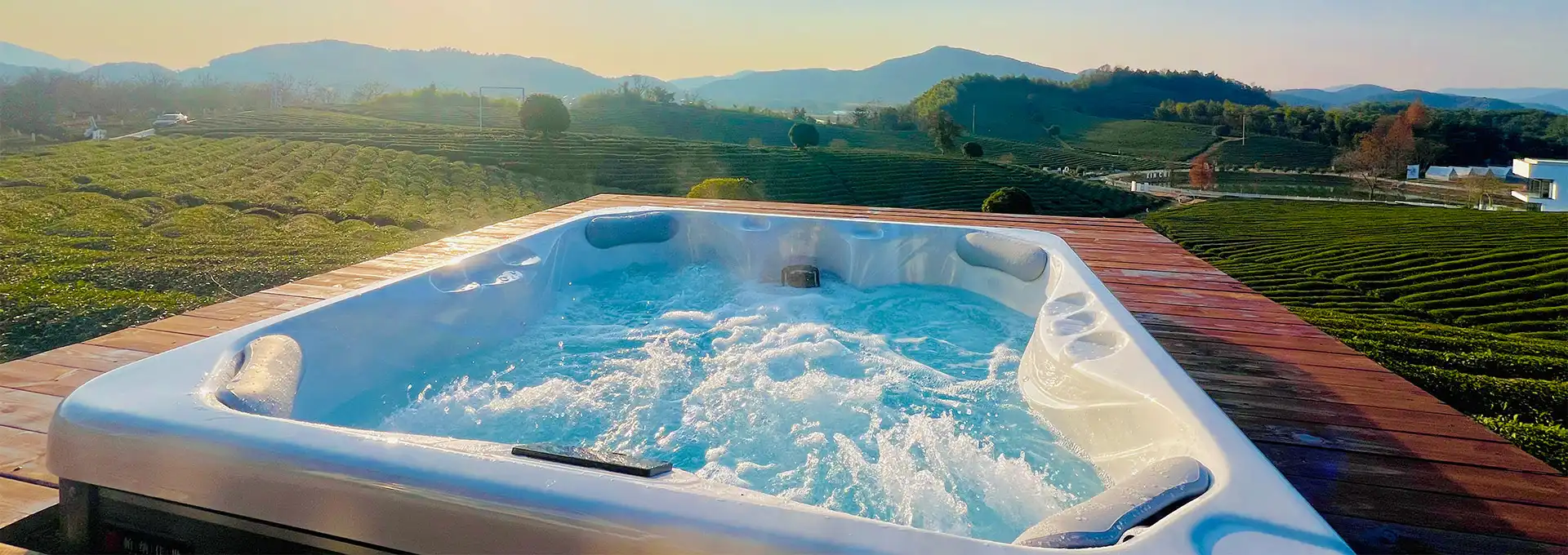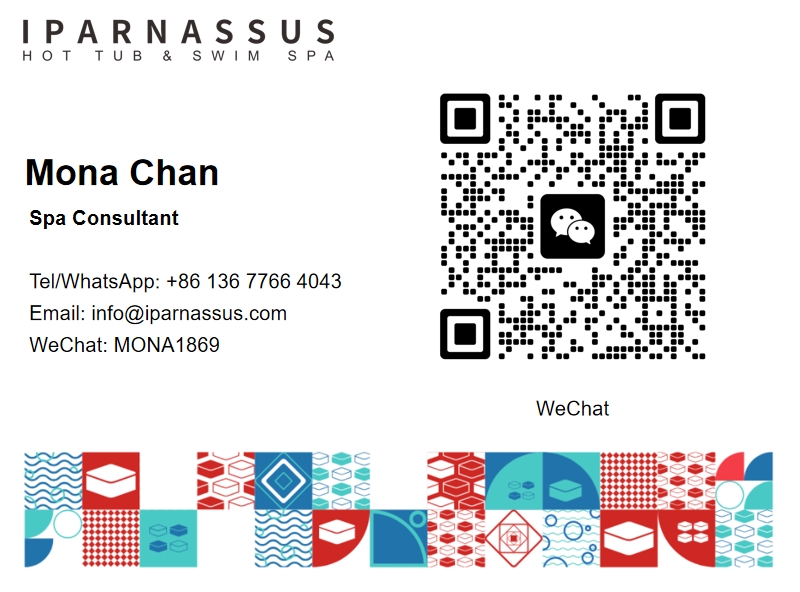The Science Behind Cold Plunge Tub Therapy
2025-09-28 11:55:32
Cold plunge therapy has gained significant popularity in recent years, with many health enthusiasts and athletes swearing by its benefits. But what exactly happens to our bodies when we immerse ourselves in frigid waters? Let's dive into the fascinating science behind cold plunge tub therapy and explore how this age-old practice can potentially improve our overall well-being.
Hormesis: Why Controlled Stress Benefits Health
The concept of hormesis is at the heart of cold plunge therapy. Hormesis refers to the biological phenomenon where exposure to low doses of a stressor can actually have beneficial effects on an organism. In the case of cold water immersion, the controlled stress of the cold triggers a cascade of physiological responses that can lead to improved health outcomes.
When we submerge ourselves in a cold plunge tub, our body perceives the cold as a threat. This activates our stress response system, leading to the release of stress hormones like cortisol and norepinephrine. While chronic stress can be detrimental, this acute, controlled stress can actually strengthen our body's resilience and adaptive capabilities.
Research has shown that regular exposure to cold water can lead to:
- Improved stress tolerance
- Enhanced immune function
- Increased antioxidant production
- Better adaptation to environmental stressors
These benefits stem from the body's adaptive response to the controlled stress of cold exposure. Over time, regular cold plunges can help train our bodies to respond more efficiently to various forms of stress, potentially leading to improved overall health and longevity.
Vasoconstriction and Blood Flow Dynamics
One of the most immediate and noticeable effects of cold water immersion is vasoconstriction - the narrowing of blood vessels. When we enter a cold plunge tub, our body reacts by constricting peripheral blood vessels to redirect blood flow to vital organs. This process helps conserve heat and protect our core temperature.
The vasoconstriction response has several potential benefits:
- Reduced inflammation: By limiting blood flow to the extremities, cold plunges can help reduce inflammation and swelling in muscles and joints.
- Improved circulation: After exiting the cold water, blood vessels dilate rapidly, leading to a rush of blood back to the extremities. This alternating constriction and dilation can help improve overall circulation.
- Enhanced lymphatic drainage: The pressure changes from vasoconstriction and subsequent vasodilation can stimulate the lymphatic system, potentially aiding in the removal of metabolic waste and toxins from tissues.
Moreover, the rapid changes in blood flow dynamics during and after a cold plunge can have a stimulating effect on the cardiovascular system. Regular cold water immersion may help improve cardiovascular health by strengthening the heart and blood vessels, making them more resilient to stress.
It's worth noting that while these effects can be beneficial for many people, individuals with certain cardiovascular conditions should consult with a healthcare professional before engaging in cold plunge therapy.
Neurotransmitter Release: The Cold-Induced High
Have you ever wondered why people often report feeling invigorated and euphoric after a cold plunge? The answer lies in the release of various neurotransmitters and hormones triggered by cold water immersion.
When we immerse ourselves in a cold plunge tub, our body releases a cocktail of mood-enhancing chemicals:
- Endorphins: These natural painkillers can induce feelings of pleasure and well-being.
- Norepinephrine: This hormone and neurotransmitter can enhance focus, attention, and energy levels.
- Dopamine: Often called the "feel-good" neurotransmitter, dopamine can boost mood and motivation.
The release of these chemicals can lead to what's often described as a "cold-induced high." Many people report feeling more alert, focused, and positive after a cold plunge session. This neurochemical boost may contribute to the growing popularity of cold water therapy as a potential tool for managing mood disorders and enhancing mental well-being.
Furthermore, the shock of cold water can activate the parasympathetic nervous system, our body's "rest and digest" mode. This activation can lead to a state of calm and relaxation once the initial shock wears off, potentially helping to reduce stress and anxiety.
Research in this area is ongoing, but preliminary studies suggest that regular cold water immersion may have neuroprotective effects and could potentially help improve cognitive function over time.
It's important to note that while the neurochemical effects of cold plunges can be beneficial, they should not be seen as a replacement for professional mental health treatment. Always consult with a healthcare provider before using cold therapy to address mental health concerns.
Conclusion
The science behind cold plunge tub therapy is multifaceted and fascinating. From the hormetic stress response to the dynamic changes in blood flow and the release of mood-enhancing neurotransmitters, cold water immersion can potentially offer a wide range of health benefits.
However, it's crucial to approach cold plunge therapy with caution and respect for your body's limits. While many people can benefit from regular cold plunges, it's not suitable for everyone. Always start gradually, listen to your body, and consult with a healthcare professional if you have any underlying health conditions.
Ready to experience the invigorating effects of cold plunge therapy for yourself? iParnassus offers state-of-the-art cold plunge tubs designed to deliver an optimal cold therapy experience. Our tubs are built with advanced temperature control systems and durable materials to ensure safety and longevity. Whether you're an athlete looking to enhance recovery, a wellness enthusiast seeking to boost your overall health, or someone curious about the benefits of cold therapy, iParnassus has the perfect solution for you. With our extensive experience in Europe, Australia, the Middle East, and North America, we understand the diverse needs of our global clientele. Don't miss out on the opportunity to transform your health and well-being. Contact us today to learn more about our range of cold plunge tubs and find the perfect fit for your home or wellness center.
FAQ
1. How long should I stay in a cold plunge tub?
The duration of a cold plunge can vary depending on individual tolerance and experience. For beginners, it's recommended to start with 30 seconds to 1 minute and gradually increase the time as your body adapts. More experienced users might stay in for 3-5 minutes. Always listen to your body and exit the tub if you feel uncomfortable.
2. What temperature should the water be in a cold plunge tub?
Typical cold plunge temperatures range from 50°F to 59°F (10°C to 15°C). Some advanced users may prefer even colder temperatures, but it's crucial to start at a temperature you can tolerate and gradually decrease it over time.
3. How often should I use a cold plunge tub?
The frequency of cold plunges can vary based on individual goals and tolerance. Some people benefit from daily plunges, while others might do it 2-3 times a week. It's important to give your body time to recover between sessions, especially when you're just starting out.
4. Are there any risks associated with cold plunge therapy?
While cold plunge therapy can offer many benefits, it's not without risks. Potential risks include hypothermia, shock to the system (especially for those with heart conditions), and skin irritation. It's crucial to consult with a healthcare professional before starting cold plunge therapy, especially if you have any pre-existing health conditions.
iParnassus: Your Trusted Cold Plunge Tub Manufacturer
When it comes to high-quality cold plunge tubs, iParnassus stands out as a leading manufacturer and supplier. Our commitment to innovation, quality, and customer satisfaction has made us a preferred choice for cold plunge enthusiasts worldwide. With over 30 patents and a professional team dedicated to design, research, and development, production, sales, and after-sales service, we ensure that every iParnassus cold plunge tub meets the highest standards of performance and durability. Whether you're looking for a personal cold plunge tub for your home or multiple units for a wellness center, we have the perfect solution for you. Don't settle for less when it comes to your health and wellness journey. Experience the iParnassus difference today. For more information or to place an order, please contact us at info@iparnassus.com. Let us help you take the plunge into better health and well-being!
References
1. Johnson, E. et al. (2022). "The Physiological Effects of Cold Water Immersion: A Comprehensive Review." Journal of Applied Physiology, 132(4), 1040-1055.
2. Smith, L. and Brown, K. (2021). "Hormesis in Cold Therapy: Balancing Stress for Optimal Health Outcomes." Annual Review of Physiology, 83, 331-354.
3. Garcia, M. et al. (2023). "Neurotransmitter Dynamics in Response to Cold Water Exposure: Implications for Mental Health." Neuroscience & Biobehavioral Reviews, 140, 104783.
4. Wilson, T. and Thompson, R. (2022). "Cardiovascular Adaptations to Regular Cold Water Immersion: A Longitudinal Study." European Journal of Applied Physiology, 122(5), 1211-1222.



